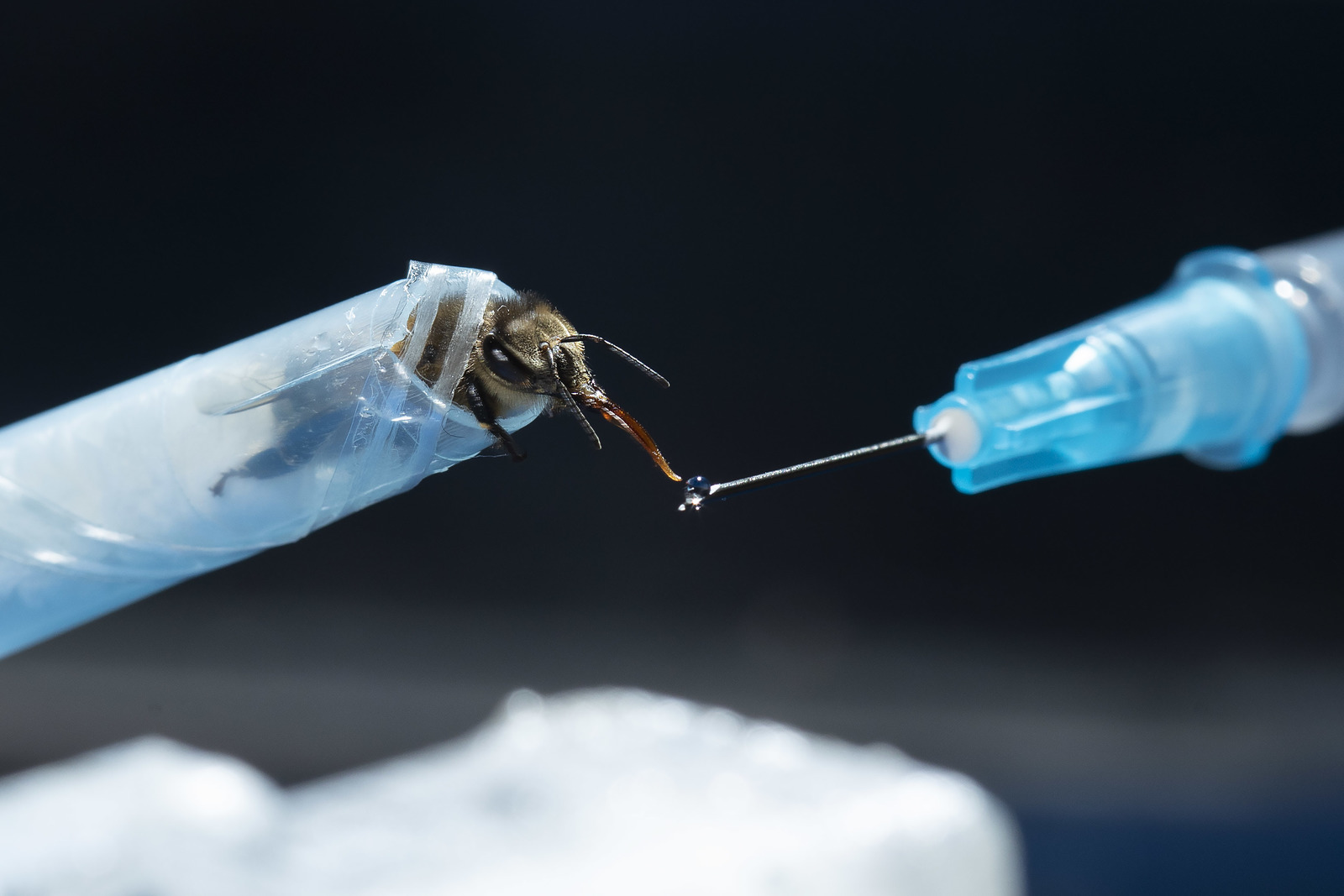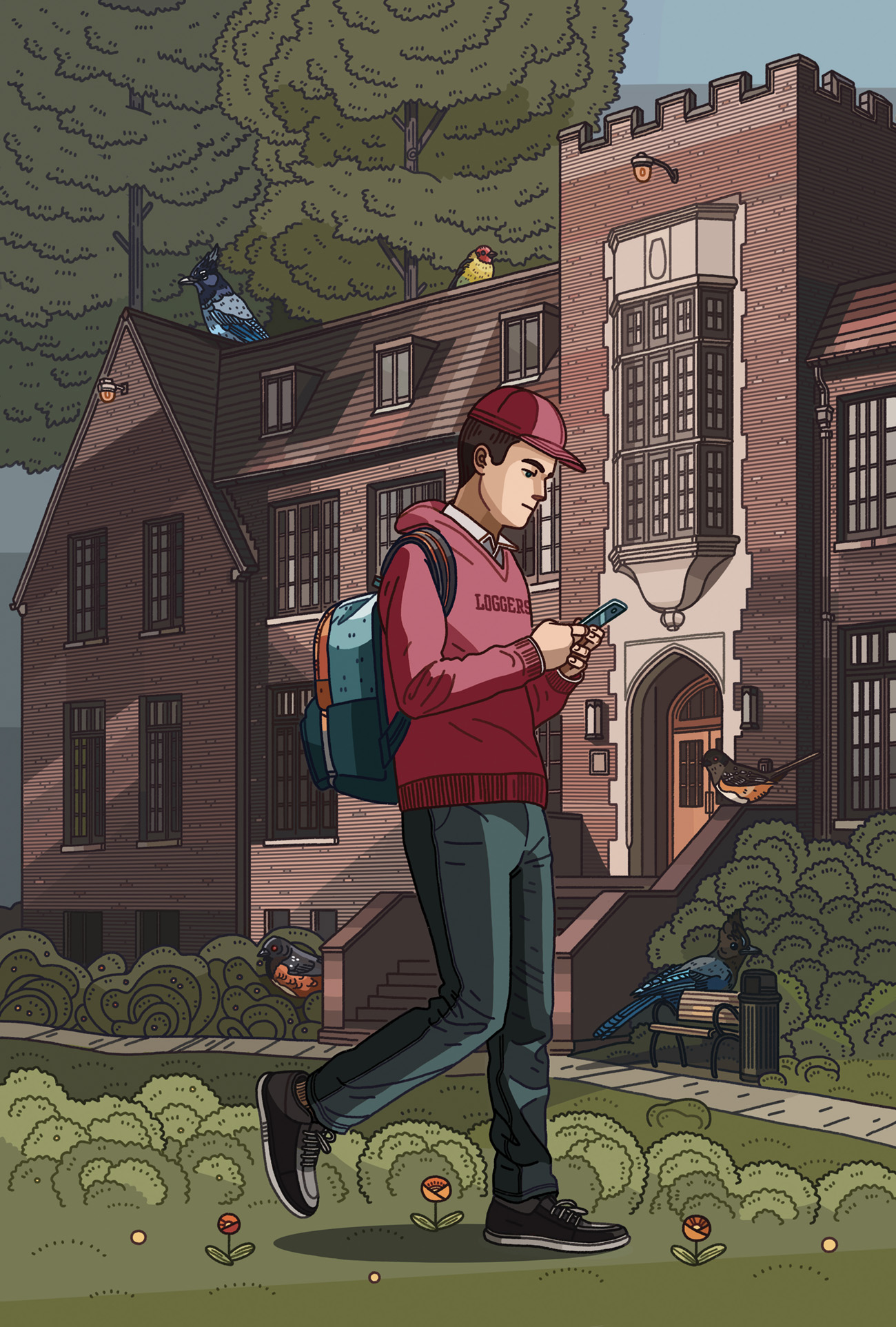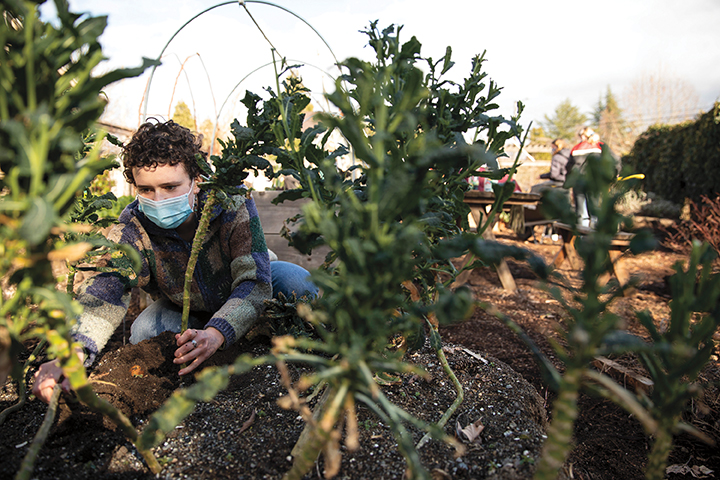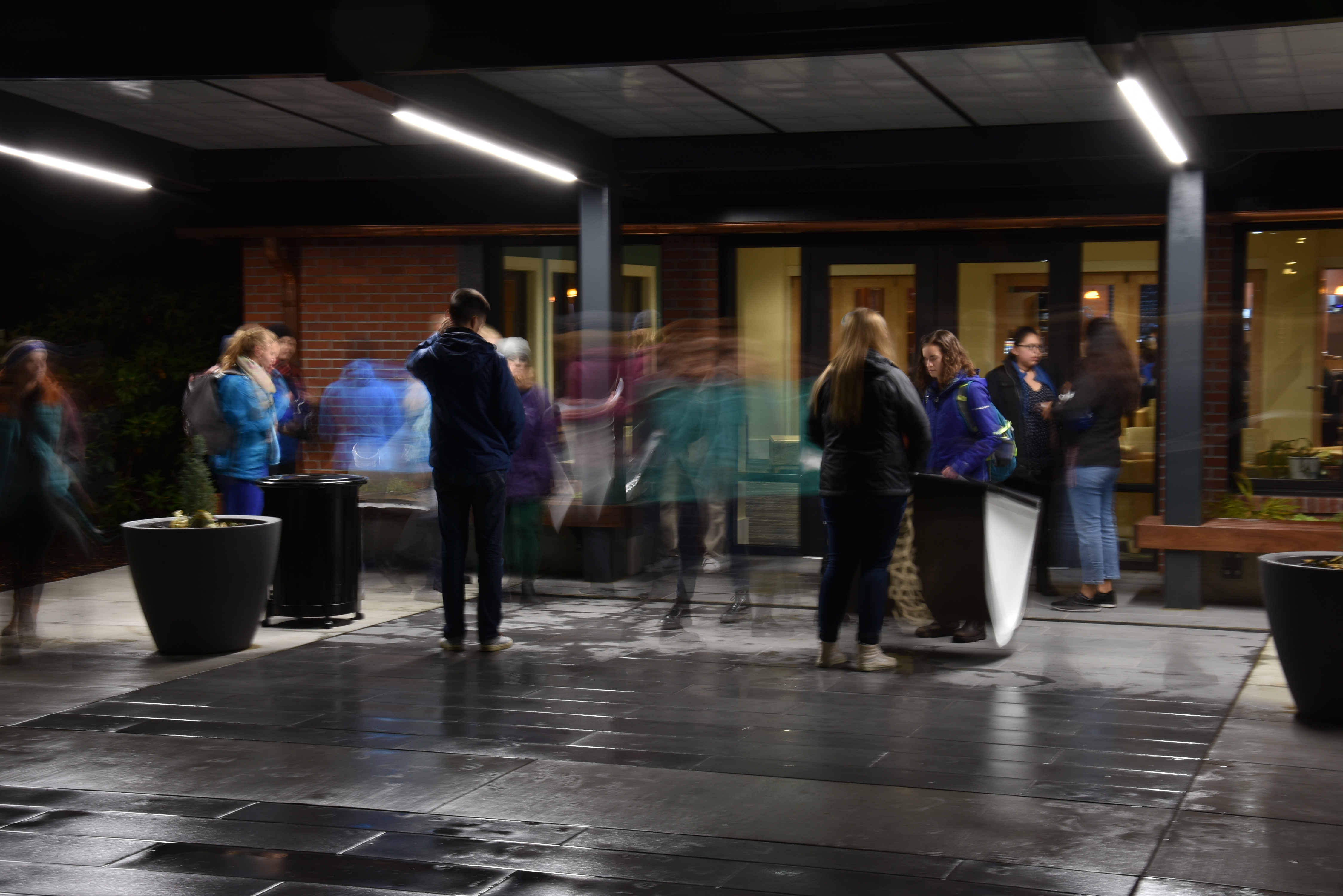Adam Schmidt ’23 dives into the mysteries of Parkinson’s disease with the help of bees
On the rooftop of Thompson Hall, Adam Schmidt ’23 emerges in a white jumpsuit, a wide-brimmed hat with a mesh face veil, and thick protective gloves. Carefully, he approaches the hive, a 5-foot-tall stack of wooden boxes located behind a greenhouse near the roof’s edge. Schmidt, a molecular and cellular biology major, isn’t interested in these bees for their honey—he wants to study their brains in an attempt to understand the progression of neurodegenerative diseases in humans.
“The bees can be a little bit fussy,” Schmidt says. “But with my gloves and my beekeeper suit, I feel unstoppable.”
After collecting 30 bees, he takes them downstairs, into the Hannaford lab. Schmidt’s project looks at the effects of Paraquat, an herbicide, on western honeybees. Paraquat is known to cause Parkinson’s disease in humans, but exactly how is unknown, so Schmidt and his lab partners are trying to model the early stages of the disease in smaller insect brains.




















